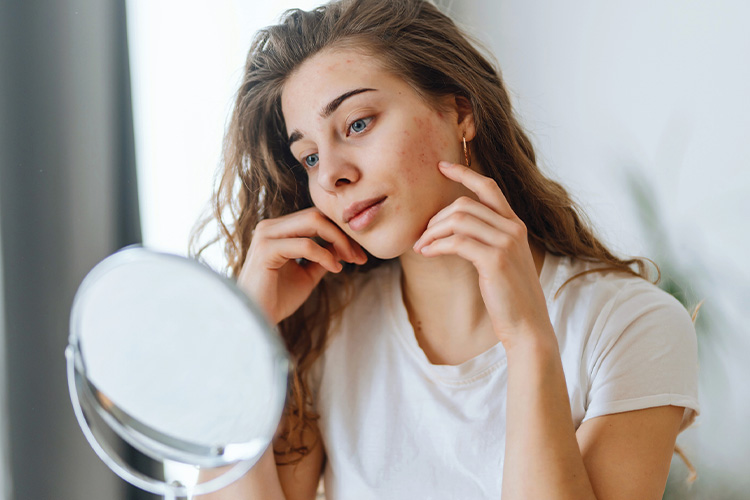Between pool days, playground visits, and backyard adventures, summer is full of opportunities for kids to be active and soak up the sun. But sometimes, all that heat and activity can lead to skin issues like heat rashes and hives. If you’ve ever noticed red bumps or itchy patches on your child’s skin after a day outside, you’re not alone. These warm-weather rashes are common, and while they can be uncomfortable, they’re usually easy to treat at home. Here’s what parents need to know to recognize the signs, prevent flare-ups, and help their kids feel better fast.
Heat Rash
After spending a long, playful day in the hot summer sun, some kids may walk away with a case of heat rash. Also known as prickly heat and miliaria, it’s a typically harmless reaction that causes discomfort. When sweat gets trapped under the surface of the skin, it can create a heat rash. This can be caused when too much sweat builds up between the skin and clothing or when pores or sweat ducts are clogged with dead skin cells.
Prevention
Making sure a child’s skin remains dry and cool helps prevent heat rash. While this is especially challenging when kids are active outdoors, some measures can be taken. If it’s excessively hot or humid, staying indoors and participating in alternative activities would be best. When spending time in the heat for long periods of time, kids should take frequent opportunities to cool down. Wearing loose-fitting clothing, especially cotton fabrics, allows the skin to breathe.
Reaction
Heat rash manifests as a group of small bumps resembling pimples or blisters. On light-colored skin, the rash often appears red, and it may look gray or white on darker skin tones. Those with heat rash experience burning, prickly, and itchy sensations. It often develops in areas of the body that aren’t getting enough airflow.
Additionally, it typically happens in folds and creases that cause skin-to-skin contact, such as armpits and elbow creases. Other common spots where heat rash forms include the neck, upper chest and back, arms, and legs, especially the inner thighs. The rash and its uncomfortable sensations may cause children to scratch their skin. Make sure they don’t as scratching the skin can cause it to break open and potentially lead to an infection.
Treatment
At-home care for heat rash is usually sufficient. As soon as you notice a rash forming, move the child to a cooler or air-conditioned environment if possible. Remove clothing from the affected area and gently wash the skin in cool or lukewarm water before patting it dry. At this point, either keep the area uncovered or have the child put on clean, loose clothing that won’t rub against their skin.
If the child continues getting heat rashes or they last longer than a handful of days, consult Olansky Dermatology & Aesthetics. Our experts can rule out other common skin conditions and possibly consider prescribing a medicated ointment to reduce itching or inflammation.
Hives
Hives are caused by triggers that produce a skin reaction by stimulating certain cells to release histamine and other chemicals into your bloodstream. This skin rash can be a result of many causes, including emotional stress and allergic reactions to foods, medications, pollen, insect bites, and more.
Hives can be a summer-related rash. Kids who engage in excessive exercise, have a sensitivity to the sun, or find themselves in extreme temperatures can experience hives.
Prevention
If high temperatures are known triggers for hives in your child, stay aware of the amount of time they’re engaging in outdoor activities. Encourage periodic breaks, especially in shaded or cooler areas. Similar to heat rash prevention, loose clothing made of breathable material can be beneficial. Children who are sensitive to sun exposure should use sunscreen.
The American Academy of Dermatology Association recommends that everyone use water-resistant sunscreen that is SPF 30 or higher with broad-spectrum protection against UVA and UVB rays.
Reaction
Hives present as raised welts of various sizes, can appear anywhere on the surface of the skin, and are known to merge into larger patches. They often itch and the sensation can be quite severe. When pressed, hives turn pale. Typically, hives go away in 24 hours or less.
Treatment
Parents can reach for over-the-counter remedies including non-drowsy antihistamines, calamine lotion, 1% hydrocortisone cream, and aloe vera.
If hive symptoms are severe and persist, it’s important to consult the experts at Olansky Dermatology & Aesthetics to determine the exact triggers and formulate a plan to help bring relief. Treatment could include prescription-grade antihistamines and anti-inflammatory drugs.
Concerned About Red Bumps on Your Child’s Skin? Visit an Olansky Dermatology & Aesthetics Provider
Most cases of heat rash and hives clear up quickly with a little extra care and attention. But if your child’s symptoms stick around, seem to get worse, or you’re just not sure what’s going on, it’s always a good idea to check in with a dermatologist. At Olansky Dermatology & Aesthetics, we’re here to help you figure out what’s causing the problem and find the right solution, so your child can get back to enjoying all the fun that summer has to offer.


